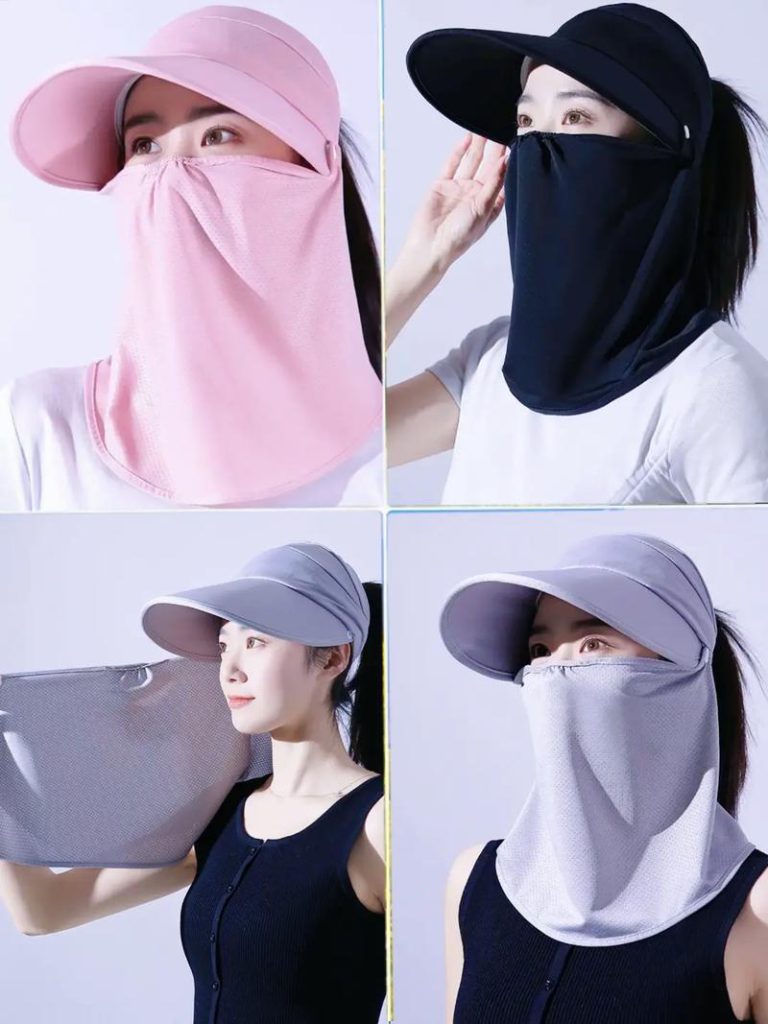
The reasons why modern women choose to wear veils are showing a diversified trend, including the continuation of traditional religious culture, as well as the integration of identity expression and fashion needs in modern society
1、 Religious and Cultural Identity
Faith practice: Some Muslim women see the veil as fulfilling the requirement of “covering the body with shame” in Islamic doctrine, reflecting their adherence to religious scriptures.
Rebellious identity: Young Muslim women in Europe resist conservative family values (such as arranged marriages) by wearing veils, while constructing an independent religious identity distinct from their ancestral immigrant culture.
Historical Inheritance: The Middle East region has tied the veil to women’s chastity and family honor, forming deeply rooted cultural norms.
2、 Social and political expression
Resistance to Stigma: In Western society, the veil has become a political symbol for Muslim women to combat Islamophobia, challenging mainstream societal biases through visual presence.
Identity Declaration: Second generation immigrants strengthen their ethnic identity through the veil, especially in the context of Salafism globalization, where the veil becomes a symbol of cultural belonging.
3、 Fashion and Individual Choice
Modest Fashion: Designers have improved the veil into trendy items such as hollow gauze and crystal headbands, leading to a trend of using headscarves as fashion accessories on university campuses.
Personality Liberation: Contemporary brides have the autonomy to choose whether or not to wear their wedding veil, and the act of lifting the veil on their own is endowed with a symbolic meaning of female independence.
Aesthetic expression: Retro veils have regained popularity in the 2020s, with Audrey Hepburn style hat style veils becoming a fashionable carrier of elegant temperament.
4、 Functional requirements
Environmental adaptation: Traditional veils still have practical value in sun protection and sand prevention in the desert regions of the Middle East.
Psychological barrier: Some women believe that veils can reduce the pressure of external gaze and create a safe social distance.
The complexity of this phenomenon lies in the fact that the same behavior may simultaneously carry vastly different motivations such as religious devotion (Saudi women), political resistance (Iranian women), and fashion declarations (European Muslims). Its choice is essentially a reinterpretation of women’s bodily autonomy in a specific cultural context。
إن ممارسة ارتداء الحجاب لدى المرأة لها جذور تاريخية عميقة وتطور ثقافي معقد ، ويمكن تلخيص عملية تطورها على النحو التالي :
الأصل و رمز الطبقة القديمة
حضارة وادي النهرين : في وقت مبكر من 2500 قبل الميلاد ، تمثال كاهنة في بلاد ما بين النهرين قد زينت مع الحجاب .
فترة الإمبراطورية الآشورية : القانون ينص صراحة على الحق في ارتداء الحجاب كأداة للتمييز الطبقي ، يجب على المرأة المتزوجة أن تخفي وجهها ، في حين أن العبيد والبغايا محظورة .
ثانياً – تعزيز المعنى الديني
قبل الإسلام : اليهودية والمسيحية قد ربطت الحجاب فضائل المرأة من خلال الكتابات الدينية ، مثل صورة مريم العذراء .
المعايير الإسلامية :
القرآن الكريم يدعو إلى تغطية ” العار ” و ربط الحجاب مع حماية العفة والاحترام الديني .
لون الحجاب له معنى رمزي ديني ( مثل الأخضر الذي يمثل شرف الحجاج ) 3 .
وظيفة اجتماعية و التكيف الجغرافي
شبه الجزيرة العربية : الحجاب الواقي من الشمس والرياح والرمال وظيفة التكيف مع المناخ الصحراوي4 .
نظام الفصل بين الجنسين : في إطار الهيكل الاجتماعي الأبوي ، الحجاب يصبح أداة للحد من مشاركة المرأة في الأماكن العامة .
رابعاً – تطور الحضارة الحديثة
حالة إيران : الحجاب تطورت تدريجيا من الالتزام الديني إلى رمز الهوية الثقافية ، التي تواجه الجيل الجديد من خلال شبكة الإنترنت تحديات التغيير .
التحول من أوروبا : الحجاب الأسود من القرون الوسطى زي الراهبات في القرن التاسع عشر الفيكتوري طقوس الجنازة الرمز .
من وجهة نظر الصين المعاصرة : تحرير المرأة اللباس من سلالة تانغ من السلطة إلى ” لو جي بالفرس ” يعتبر إشارة تاريخية إلى تطوير استقلالية الجسم .
خامساً – المنازعات المعاصرة والتعددية في التفسير
الحجاب يحمل في نفس الوقت في المجتمع الحديث :
المؤلف : عبد العزيز بن عبد العزيز آل سعود
الرمز السياسي : إذا أصبحت إيران محور اللعبة التقليدية والحديثة
المقاومة الثقافية : الأقليات بناء الهوية من خلال الحجاب
هذا التطور يكشف عن العلاقة التفاعلية بين الجسم والانضباط الاجتماعي هيكل السلطة ، واتجاه التنمية في المستقبل لا يزال
